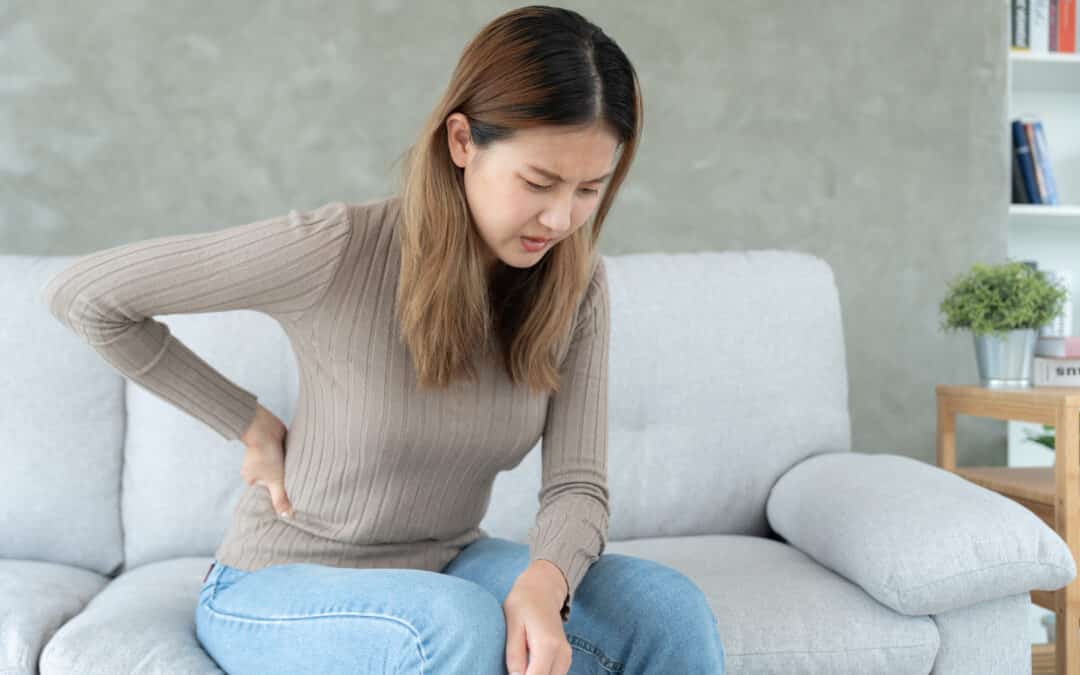As the crisp, cool air of fall begins to settle in, many people notice an unwelcome companion—joint pain. Fall joint pain is expected during the changing seasons, particularly as the weather becomes more relaxed and damper. Whether you have arthritis or other joint-related issues, the shift from summer warmth to fall’s chilly temperatures can exacerbate discomfort and stiffness. Understanding the causes of fall joint pain and managing it effectively is critical to enjoying the season without limitations.
What Causes Fall Joint Pain?
1. Weather-Induced Stiffness
One of the most significant contributors to joint pain in fall is the change in weather. Many individuals report increased joint stiffness as temperatures drop and humidity levels fluctuate. Cold weather can cause the synovial fluid lubricates joints to thicken, leading to tightness and discomfort. Additionally, barometric pressure changes can cause tissues to expand or contract, which may irritate the nerves around your joints.This stiffness can make it harder to move comfortably, especially in the morning or after periods of inactivity. The colder it gets, the more likely you are to feel these effects, especially if you have arthritis.
2. Inflammation
Inflammation is another key factor behind joint pain in falls. For individuals with inflammatory conditions like rheumatoid arthritis, the cooler fall months can trigger flare-ups. Inflammation occurs when the body’s immune system mistakenly attacks the joints, leading to pain, swelling, and stiffness. The temperature drop can increase this response, making joint pain more pronounced.Even for those without arthritis, inflammation may still play a role in fall joint pain, as colder weather can affect blood flow, leading to slower healing of inflamed or injured joints.
3. Decreased Activity Levels
Fall often brings a more sedentary lifestyle as outdoor activities wind down and the days grow shorter. As you become less active, muscles surrounding your joints can weaken, putting more stress on the joints themselves. This lack of movement can contribute to fall joint pain, as staying active is crucial for maintaining flexibility and keeping your joints lubricated. When movement decreases, so does joint health, which can increase stiffness and discomfort.
Without regular movement, your body’s muscles may not support the joints as effectively, leading to more pain during basic activities.
4. Seasonal Weight Gain
Another overlooked cause of joint pain in the fall is weight gain, which sometimes accompanies the cooler months. With fall festivities and holiday meals around the corner, many people consume more calories than they burn. Extra weight adds pressure to weight-bearing joints like the knees, hips, and lower back, leading to more discomfort and pain.
How to Minimize Fall Joint Pain
Fortunately, several ways exist to reduce fall joint pain and stay comfortable throughout the season. Implementing a few lifestyle changes and adopting joint-friendly habits can make a big difference.
1. Stay Active
Staying active is one of the best ways to minimize fall joint pain. Regular exercise helps keep your joints flexible and strengthens the muscles that support them. Low-impact activities such as walking, swimming, and cycling are particularly beneficial. These exercises promote joint mobility without putting too much stress on the body.Stretching daily can also help alleviate stiffness. Try incorporating a short warm-up and cool-down routine into your day to increase blood flow to your joints and muscles, helping them stay limber.
2. Dress Warmly
One of the simplest ways to combat fall joint pain is to dress appropriately for the cooler weather. Layering with warm clothing, particularly around your knees, wrists, and hands, can warm your joints and reduce stiffness. Thermal clothing, scarves, gloves, and leg warmers are great ways to insulate your body and prevent the cold from irritating your joints.Using heating pads or warm baths to relax muscles and joints can also help reduce pain during colder months.
3. Maintain a Healthy Weight
Managing your weight is essential for minimizing fall joint pain, especially if you suffer from joint-related conditions. Even a small amount of excess weight can put significant pressure on your joints, exacerbating pain and discomfort. Eating a balanced diet rich in anti-inflammatory foods, such as fruits, vegetables, and whole grains, can help reduce joint inflammation and promote overall joint health.Remember portion sizes during fall, and avoid overindulging in high-calorie seasonal treats.
4. Use Joint Supplements
For some people, joint supplements can help reduce fall joint pain. Glucosamine and chondroitin are popular supplements that promote joint health by supporting cartilage repair and reducing inflammation. Omega-3 fatty acids, found in fish oil, also have anti-inflammatory properties that can help alleviate joint discomfort.Before starting any supplement regimen, consult with a healthcare professional to ensure it is appropriate for your specific needs.
5. Stay Hydrated
Hydration is often overlooked in joint health, but staying hydrated is essential for minimizing fall joint pain. Synovial fluid, which lubricates and cushions the joints, relies on water to maintain viscosity. Drinking plenty of water throughout the day helps lubricate your joints, reducing stiffness and pain.Because of the cooler temperatures in the fall, people often drink less water, so make a conscious effort to stay hydrated
Fall joint pain can be an unwelcome addition to the changing season. Still, you can enjoy all that fall offers by understanding its causes and implementing strategies to reduce discomfort. From staying active and dressing warmly to managing your weight and using joint supplements, there are plenty of ways to manage joint pain and maintain your quality of life during the fall months.
It may be time to consult a specialist if you’re struggling with persistent or severe fall joint pain. For expert care and personalized treatment, contact Minivasive Pain and Orthopedics to help you find relief and get back to enjoying your favorite fall activities.

